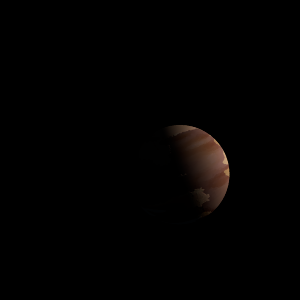|
|
Space Astro
|
Info for exoplanet "Nanyang"
| Scientific (actual) data |
|---|
| Name | Kepler-981 b |
| Planet status | Confirmed |
| Radius | 0.206 |
| Orbital period | 4.46976 |
| Discovered | 2016 |
| Updated | 2021-02-05 |
| Tconj | 2454960 |
| Publication | Announced on a website |
| Detection type | Primary Transit |
| Alternate names | 2MASS J19165973+4739003 b, K01851.01, KIC 10464050 b, KOI-1851 b, KOI-1851.01, WISE J191659.74+473900.4 b |
| Star name | Kepler-981 |
| Right ascension | 289.25° |
| Declination | 47.65° |
| Mag j | 13.574 |
| Mag h | 13.272 |
| Mag k | 13.169 |
| Star distance | 913 |
| Star metallicity | 0.01 |
| Star mass | 0.98 |
| Star radius | 0.96 |
| Star age | 4.07 |
| Star temperature | 5718 |
| Star alternate names | 2MASS J19165973+4739003, KIC 10464050, KOI-1851, WISE J191659.74+473900.4 |
| Wikipedia article | Kepler-981 b |
Back
| |
| Fictional info (?) |
|---|
| Suggested name | Nanyang |
| Planet type | Cold planet |
| The volume of water ice in the south polar ice cap, if melted, would be sufficient to cover the entire planetary surface to a depth of 15 meters. |
| Atmosphere | Carbon dioxide | 58% |
| Carbonyl sulfide | 31% |
| Methane | 5.9% |
| Hydrogen deuteride (HD) | 4.3% |
| Hydrogen peroxide | 0.026% |
| Nitrogen | 1.0E-6% |
| Atmospheric pressure | 0.007 bar |
 |
| No known satellites |
| Google search for Nanyang |
|
Website by Joachim Michaelis
|
|
|
|